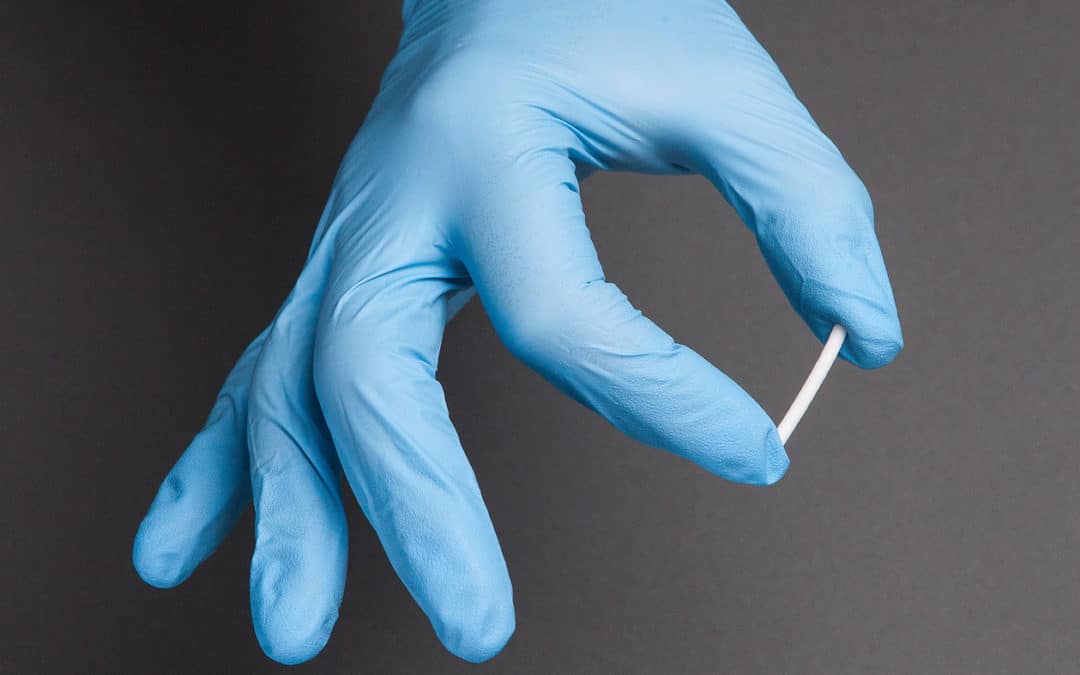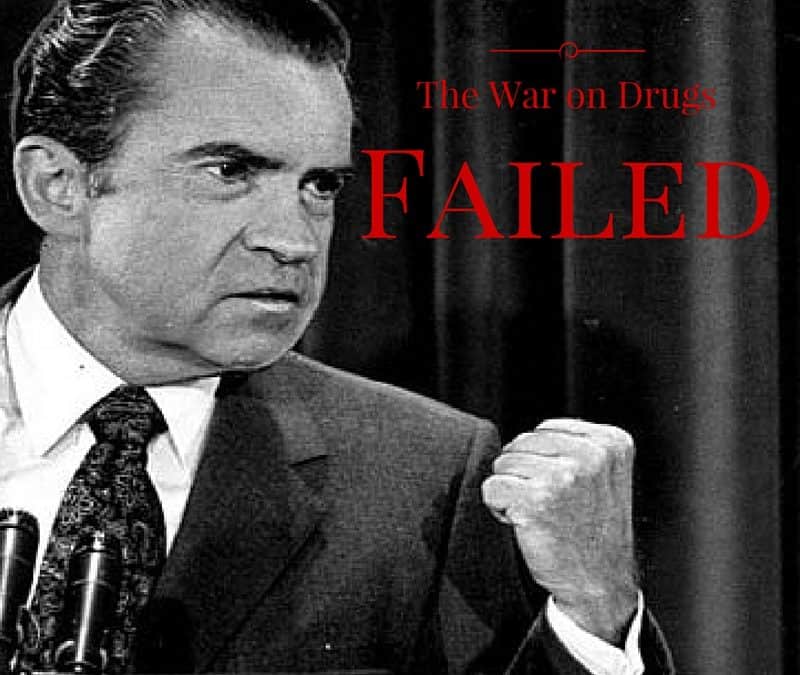American college and university campuses are hotspots for some of the hardest partying in the country, a place where students report using drugs and alcohol to relieve stress, fit in, have fun and forget their problems.
A 2005 study by the National Center on Addiction and Substance Abuse at Columbia University found that scores of college presidents, deans, trustees and alumni view alcohol and drug abuse on campus as a harmless rite of passage and have not only tolerated but also facilitated a culture of substance abuse at their colleges.1
Abusing drugs and alcohol on campus is the norm and not the exception, but large numbers of students pay a high price for the opportunity to engage in largely unchecked substance abuse. The CASAColumbia study found that nearly 25 percent of all college students meet the medical criteria for substance abuse or dependence, compared to just eight percent of the general population.
According to the Substance Abuse and Mental Health Services Administration, the number of students between the ages of 18 and 24 who sought treatment for a substance use disorder nearly doubled between 1999 and 2009. The National Institute on Drug Abuse points out that daily marijuana use among that demographic is at its highest since 1980 and exceeds the number of people in that age group who smoke cigarettes.2
Texas is no stranger to high rates of drug and alcohol abuse on campus. In 2015, the University of Texas at Austin conducted their biennial Texas Survey of Substance Use Among College Students, garnering 20,110 responses from four-year universities and two-year colleges across the state.3
This eBook examines and discusses the findings of the survey and takes a look at what Texas colleges and universities are doing to curb drug abuse on their campuses and support students who are in recovery from a substance use disorder.
Alcohol Abuse on Texas Campuses
The University of Texas survey found that 76 percent of its student respondents reported using alcohol in the past year, and 61 percent reported drinking in the past month.
Of the respondents:
- Over half described themselves as light drinkers
- 26 percent described themselves as moderate drinkers
- 4 percent described themselves as heavy drinkers
- Half of one percent described themselves as problem drinkers
Only 16 percent of respondents reported abstaining from alcohol completely.
Underage Drinking on Texas Campuses
Around 12 percent of underage respondents to the survey reported obtaining alcohol with a fake ID, and 22 percent noted that they were able to drink in bars or purchase alcohol in stores where they weren’t carded. Students reported that restaurants are the easiest place for underage students to get served, followed by gas stations, off-campus bars, and grocery stores. Seventy-four percent of respondents to the survey reported obtaining alcohol from a friend who was over 21.
Nearly 70 percent of underage respondents reported drinking alcohol in the past year, compared to almost 90 percent of students who are of legal drinking age.
Drug Abuse on Texas Campuses
Drug abuse abounds on campuses as well. Around 25 percent of students who have a history of using illegal drugs reported using more drugs now than they did upon entering college, compared to 20 percent in the 2013 survey, and 50 percent reported that their drug use decreased or stopped since entering college, compared to 61 percent in 2013. Marijuana and prescription opiate and stimulant drugs are the most commonly used illegal substances among Texas college students.
Of the students who reported continuing to use illicit drugs in college, 73 percent said they typically use marijuana, and 26 percent of students reported abusing prescription drugs. Opiate painkillers were the most commonly abused prescription drug, with 16 percent of respondents using Vicodin, OxyContin or similar opiates to get high at least once in their lifetime.
Only 8 percent of surveyed students used opiate prescription painkillers in the past year, and just two percent used them in the past month. Around 15 percent of respondents reported using prescription stimulants like Adderall or Concerta at least once in their lifetime, with 9 percent reporting past-year usage and 4 percent reporting using stimulants in the past month.
The Difference Between Abuse, Addiction and Dependence
It’s important to understand that drug abuse, addiction and dependence are not the same thing, although drug abuse may lead to addiction and dependence, particularly in students who have risk factors for developing a substance use disorder to begin with.
Drug abuse, addiction and dependence are not the same thing.
Drug Abuse
Drug abuse is the act of using a legal or illegal psychoactive substance in a way that causes negative consequences.4 These consequences may include:
- Problems with school or work, including skipping classes or calling in sick due to a hangover.
- Engaging in risky behaviors, such as driving under the influence or having unsafe sex, as a result of using alcohol or drugs.
- Legal problems like DUI or citations for public intoxication or minor in possession.
- Problems with interpersonal relationships, such as frequent arguing with friends or family members while under the influence.
- Becoming irritable or depressed while drinking.
Binge drinking is the most common form of drug abuse. The National Institute on Alcohol Abuse and Alcoholism defines binge drinking as consuming enough alcohol in the space of two hours to bring your blood alcohol concentration, or BAC, levels to the legal limit of .08 g/dL.5 This typically occurs after four drinks for women and five for men.
In the Texas survey, 35 percent of women and 41 percent of men reported binge drinking at least once in the past 30 days, and five percent of female and 10 percent of male respondents reported binge drinking at least six times in the past 30 days.
Addiction
Chronic drug or alcohol abuse can transition to addiction. Addiction is characterized by compulsively using drugs or alcohol despite negative consequences relating to relationships, finances, the law, work or school and health.
Addiction is the result of changes in brain function related to memory and reward. Signs and symptoms of addiction include:6
- Continuing to drink despite the problems it’s causing in your life.
- A loss of control over the amount and frequency of drinking.
- Neglecting hobbies and activities you once enjoyed.
- Increasingly neglecting responsibilities at school and work.
- Taking serious risks to procure drugs or alcohol.
- Experiencing problems in relationships with family, friends, classmates or co-workers.
- Hiding the extent of your drinking from friends and family.
- Increasingly neglecting personal hygiene.
Addiction is the result of changes in brain function related to memory and reward.
The National Institute on Drug Abuse points out that willpower and good intentions alone are rarely enough to help someone overcome an addiction. Professional help almost always necessary for long-term recovery.7
Dependence
Drug or alcohol dependence is characterized by withdrawal symptoms that set in as your brain’s way of telling you that neurotransmitter activity has changed to the point where the brain now operates more normally when a substance is present than when it’s not. Withdrawal symptoms that set in upon quitting the use of a substance indicate that physical dependence has developed.
Effects of Drug & Alcohol Abuse by College Students
Aside from increasing the risk of developing a substance use disorder, abusing drugs and alcohol can have devastating consequences for college students.
Problems with Academic Performance
Students who abuse drugs or alcohol have statistically significant lower grades, although the differences between the GPAs of those who are light, moderate and heavy drinkers are relatively small. Students who use illicit drugs on a monthly basis have an average GPA of 3.14, according to the Texas survey, and those who use drugs casually have an average GPA of 3.24. Students who have never abused drugs or alcohol have an average GPA of 3.33, while both light and heavy drinkers have an average GPA of 3.10.
More than five percent of light drinkers, 22 percent of moderate drinkers and 51 percent of heavy or problem drinkers report having missed at least one class during the year as a direct result of drinking. Additionally, eight percent of light drinkers, 26 percent of moderate drinkers and 47 percent of heavy drinkers got behind on their schoolwork due to drinking.
Unsafe Sex
Around 27 percent of moderate and 52 percent of heavy drinkers report engaging in unplanned sex due to alcohol consumption. Twenty percent of moderate and 42 percent of heavy drinkers report engaging in unprotected sex while under the influence. Among those who were under the influence of illicit drugs, around 12 percent reported having unplanned sex, and 12 percent reported having unprotected sex.
Injury
Over nine percent of all drinkers reported having injured themselves as a result of drinking. That rate climbed to 42 percent for heavy drinkers, five percent of whom reported needing medical attention as the result of an alcohol overdose. By way of comparison, just six percent of illicit drug users reported injury as the result of abusing drugs.
Driving Under the Influence
The survey found that 23 percent of respondents report driving under the influence at least once in the past month. Around 25 percent report having ridden with an intoxicated driver in the past 30 days. Over two percent reported being involved in an accident involving a drunk driver, and 25 percent of those students reported being the driver at fault in the accident.
It’s encouraging to note that almost 50 percent of students reported serving as a designated driver at least once in the course of a typical month.
Almost 50 percent of students reported serving as a designated driver at least once in the course of a typical month.
Assault, Sexual Assault and Rape
CASAColumbia reports that each year, nearly 100,000 college students are victims of sexual assault and rape involving alcohol, and an additional 700,000 students are physically assaulted by classmates who are under the influence.1
Drug Abuse & Mental Health on College Campuses
Research shows that college students have an increased risk of developing mental disorders, including depression, anxiety and eating disorders, due to various stressors and life transitions. Mental illness often leads to substance abuse as a form of self-medication, increasing the risk of developing an addiction. Additionally, drug and alcohol abuse can worsen existing symptoms of mental illness or cause them to set in where none existed previously.
The Texas survey found that heavy drinkers on campus reported more frequent feelings of hopelessness, worthlessness or depression than light and moderate drinkers. Illicit drug users were most affected by these feelings, with over half reporting feeling hopeless some of the time and nearly 20 percent reporting feeling this way most of the time. Likewise, around 20 percent of drug users reported having feelings of anxiety most of the time and nearly 80 percent felt anxious some of the time.
Campus Drug & Alcohol Policies
Although almost all Texas colleges and universities have a written alcohol and drug policy in place, the survey found that nearly 40 percent of students were unsure whether theirs did. Sixty percent were unsure whether their school had a drug and alcohol abuse prevention program, and 77 percent didn’t know whether their school had a peer education program for alcohol and drug abuse.
Almost all Texas colleges and universities have a written alcohol and drug policy in place.
Only 30 percent of students said that they had received information on alcohol policies on campus, and 22 percent reported having attended an abuse prevention event sponsored by their school.
Top Ten Reasons Why College Students Stop Drinking
Over 46 percent of Texas college students report having decided to quit or cut down on drinking at least once in their lifetime. The most common reason for doing so was related to the fear of drinking and driving, followed by the expense of drinking. The third most common reason for quitting or cutting down on drinking was that students didn’t like the way it made them feel. Other reasons included weight gain associated with drinking, the effect of drinking on academic or athletic performance and family disapproval.
Challenges in Recovery on College Campuses
Students in recovery from drug or alcohol addiction or chronic abuse have made a voluntary commitment to living a sober lifestyle and engaging in activities on and off campus that promote good health and well-being. Relapse rates for addiction are between 40 and 60 percent, which are similar to the relapse rates of other chronic illnesses like diabetes and heart disease.8
A college student in recovery faces a number of challenges in the quest to maintain long-term sobriety:
Social norm of substance abuse. Using drugs and alcohol is considered to be a normal part of college life, and trying to live a life of sobriety on campus when only 16 percent of the student body is abstinent can pose a serious challenge to a student’s ongoing recovery.
Stress. Stress is a major contributor to addiction relapse.9 College students in recovery must find ways to control their stress, which can be difficult. Common stressors on campus include being on your own for the first time, maintaining good grades, managing relationships and holding down a job, and these can quickly contribute to relapse.
Triggers. Dormitories, Greek houses and apartments near campus are notorious for their weekend parties. Additionally, many campuses, such as the University of Texas at Austin, are in very close proximity to a number of bars frequented by college students. Football games, which commonly involve tailgating or attending pre- and post-game parties, occur nearly every week during the fall and winter months. The high prevalence of drug- and alcohol-fueled extracurricular activities can make maintaining sobriety very difficult for many students.
A lack of a sense of belonging. Students who find that their campus offers little support for their recovery may feel like they don’t belong, and this can lead to disengagement with peers, high stress levels, low self-esteem and a number of other problems that are, in themselves, potent factors for relapse.
Mental illness. Stress and feelings of isolation that are common among students in recovery can lead to symptoms of mental illness, especially depression and anxiety. These mental health problems can lead to relapse as a form of self-medication in an attempt to alleviate these feelings.
Where Students Go for Help for Problem Drinking or Addiction
The University of Texas at Austin’s Center for Students in Recovery is a stellar program that helps students in recovery maintain sobriety while offering a number of drug- and alcohol-free activities to help ensure a healthy social life and a genuine college experience.
The center is student-run, and it’s located inside the athletic facilities that are attached to the football stadium. Students in recovery socialize, support one another in sobriety and engage in community service, such as speaking in high schools and offering seminars for emergency room doctors.
So successful is the Austin program, according to NPR, that in 2012, the University of Texas invested nearly $1 million in expanding the recovery program to every University of Texas campus in the state.10
Texas Tech is another school with a popular and highly effective recovery program. Students take a one-credit course in relapse prevention and complete 10 hours of community service each semester. The program was recently awarded a $700,000 federal grant to teach other colleges to establish and operate similar successful recovery communities. The relapse rate for students in this program is a nearly unheard of six percent.
The Association of Recovery in Higher Education is a 501(C)3 nonprofit organization that represents and supports collegiate recovery communities and compiles a list of American colleges and universities that offer some type of recovery program.11
In addition to the University of Texas system and Texas Tech, schools in the state that currently have a high-quality recovery program include Baylor University, the University of Houston and the University of North Texas.
Other Ways Colleges May Support Students in Recovery
According to a 2011 article published in the Journal of Student Affairs Research and Practice, colleges can accomplish the goal of supporting the personal and academic goals of students in recovery by:12
- Promoting campus-based 12-step programs
- Offering drug- and alcohol-free housing
- Offering sober events that help students network with peers in recovery
- Offering substance abuse counseling that’s provided by trained clinicians experienced in substance use disorders
- Embarking on education and awareness campaigns to reduce the stigma of substance use disorders
Where to Turn for Help
If your college has a recovery support program in place, you’ll likely find it to be a safe and welcoming place to explore your options if you think you may have an alcohol use disorder. If your college doesn’t have this type of program, you can still find help on campus.
While many colleges and universities aren’t equipped to treat substance use disorders, a therapist or physician at the campus health center can help you find a treatment program that will help you design a recovery plan that’s in tune with your needs and goals. An outpatient program or intensive outpatient program can offer effective treatment while allowing you to continue attending classes.
The most important thing is that you get the help you need and find as much support as you can on campus. Most campuses will at least have a sanctioned or unsanctioned 12-step recovery program for students, which will offer a wealth of resources and the opportunity to develop productive and valuable relationships with non-using peers.
Asking for help in overcoming a substance use disorder is often the hardest part of recovery. It’s difficult to admit you have a problem with drinking or drug abuse, and you may have a number of questions or concerns about different types of treatment.
Seeking answers to those questions and finding some help now will improve your quality of life and help restore your sense of well-being as well as prevent the abuse or addiction from worsening and affecting you more adversely down the road.
Sources:
- Califano Jr., J. A. (2007, May 28). Wasting the Best and the Brightest: Alcohol and Drug Abuse on College Campuses. Retrieved from http://www.centeronaddiction.org/newsroom/op-eds/wasting-best-and-brightest-alcohol-and-drug-abuse-college-campuses
- Results from the 2013 National Survey on Drug Use and Health: Summary of National Findings. (2014, September). Retrieved from http://www.samhsa.gov/data/sites/default/files/NSDUHresultsPDFWHTML2013/Web/NSDUHresults2013.pdf
- Marchbanks III, M. P., et.al. (2015, August). 2015 Texas Survey of Substance Use Among College Students. Retrieved from http://texascollegesurvey.org/wp-content/uploads/2015/10/2015_Main_Report.pdf
- Drug Abuse. (2013, February 8). Retrieved from http://umm.edu/health/medical/ency/articles/drug-abuse
- Drinking Levels Defined. (n.d.). Retrieved from http://www.niaaa.nih.gov/alcohol-health/overview-alcohol-consumption/moderate-binge-drinking
- About Addiction: Signs and Symptoms. (2015, July 25). Retrieved from https://ncadd.org/about-addiction/signs-and-symptoms/signs-and-symptoms
- DrugFacts: Understanding Drug Abuse and Addiction. (2012, November). Retrieved from https://www.drugabuse.gov/publications/drugfacts/understanding-drug-abuse-addiction
- The Science of Drug Abuse and Addiction: The Basics. (2014, September). Retrieved from https://www.drugabuse.gov/publications/media-guide/science-drug-abuse-addiction-basics
- Sinha, R. (2007, October). The Role of Stress in Addiction Relapse. Current Psychiatry Reports, 9(5), 388-395. Retrieved from http://www.ncbi.nlm.nih.gov/pubmed/17915078
- Goodwyn, W. (2015, March). Amid Rising Concern About Addiction, Universities Focus on Recovery. Retrieved from http://www.npr.org/2015/03/15/393038598/amid-rising-concern-about-addiction-universities-focus-on-recovery
- Collegiate Recovery Program Members. (n.d.) Retrieved from http://collegiaterecovery.org/programs/
- Perron, B. E., Grahovac, I. D., Uppal, J. S., Granillo, T. M., Shutter, J., & Porter, C. A. (2011). Supporting Students in Recovery on College Campuses: Opportunities for Student Affairs Professionals. Journal of Student Affairs Research and Practice, 48(1), 47-64. Retrieved from https://deepblue.lib.umich.edu/bitstream/handle/2027.42/83159/StudentsInRecovery.pdf;jsessionid=0D4B00D597AA5543046444FAED493975?sequence=1




 Everyday 129 families lose a loved one to a drug overdose. That’s like a Boeing 727 losing all of its passengers on a daily. Unacceptable right? According to the
Everyday 129 families lose a loved one to a drug overdose. That’s like a Boeing 727 losing all of its passengers on a daily. Unacceptable right? According to the

